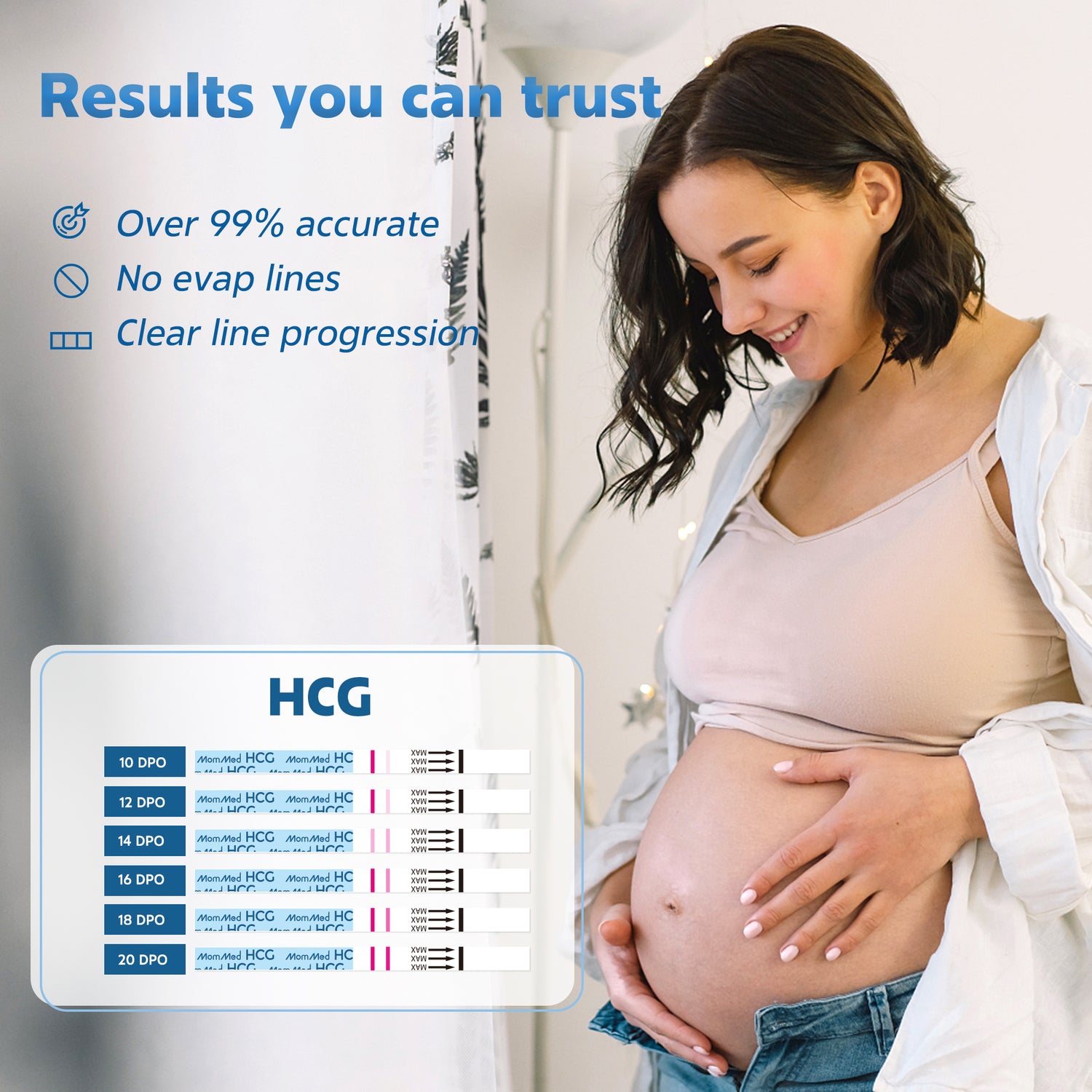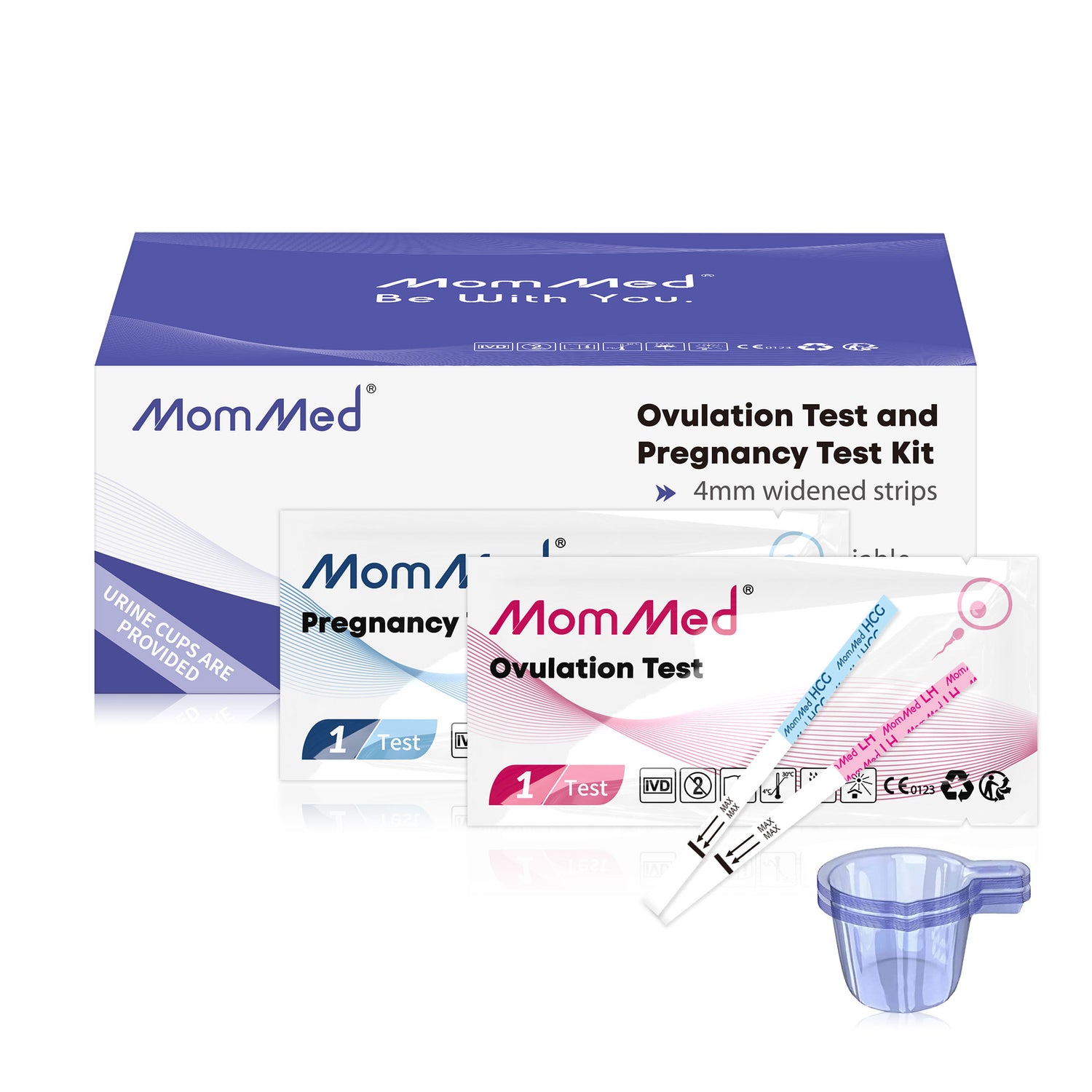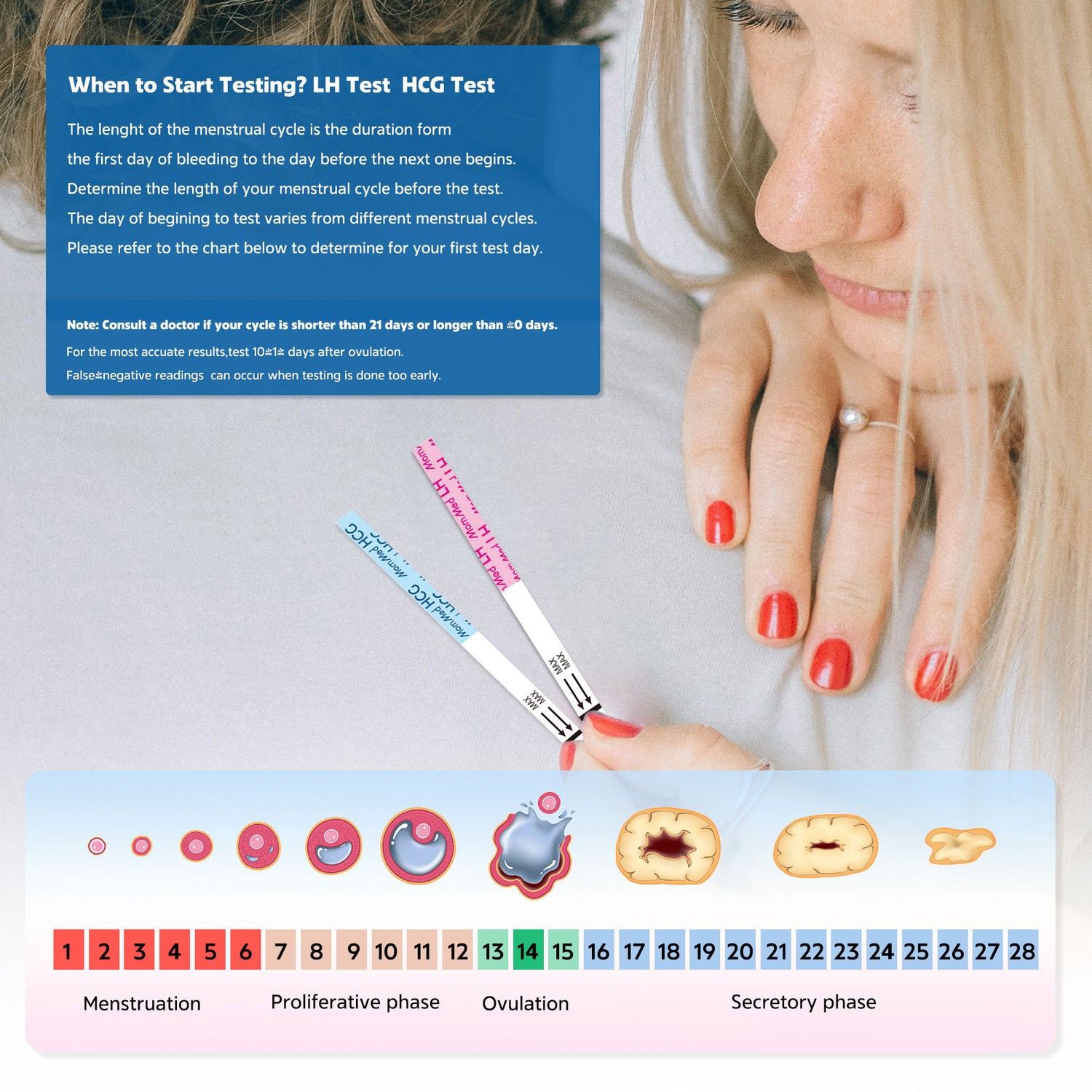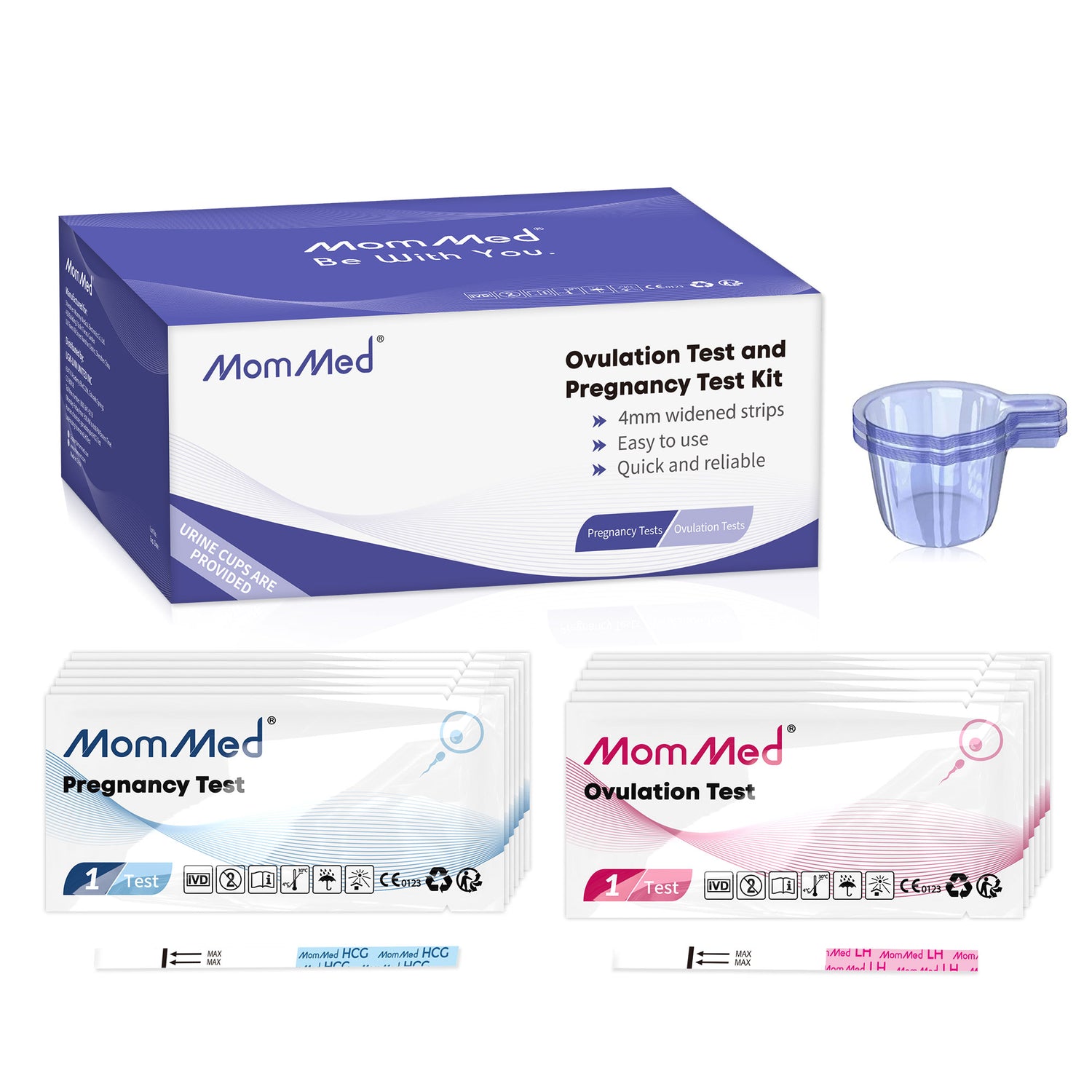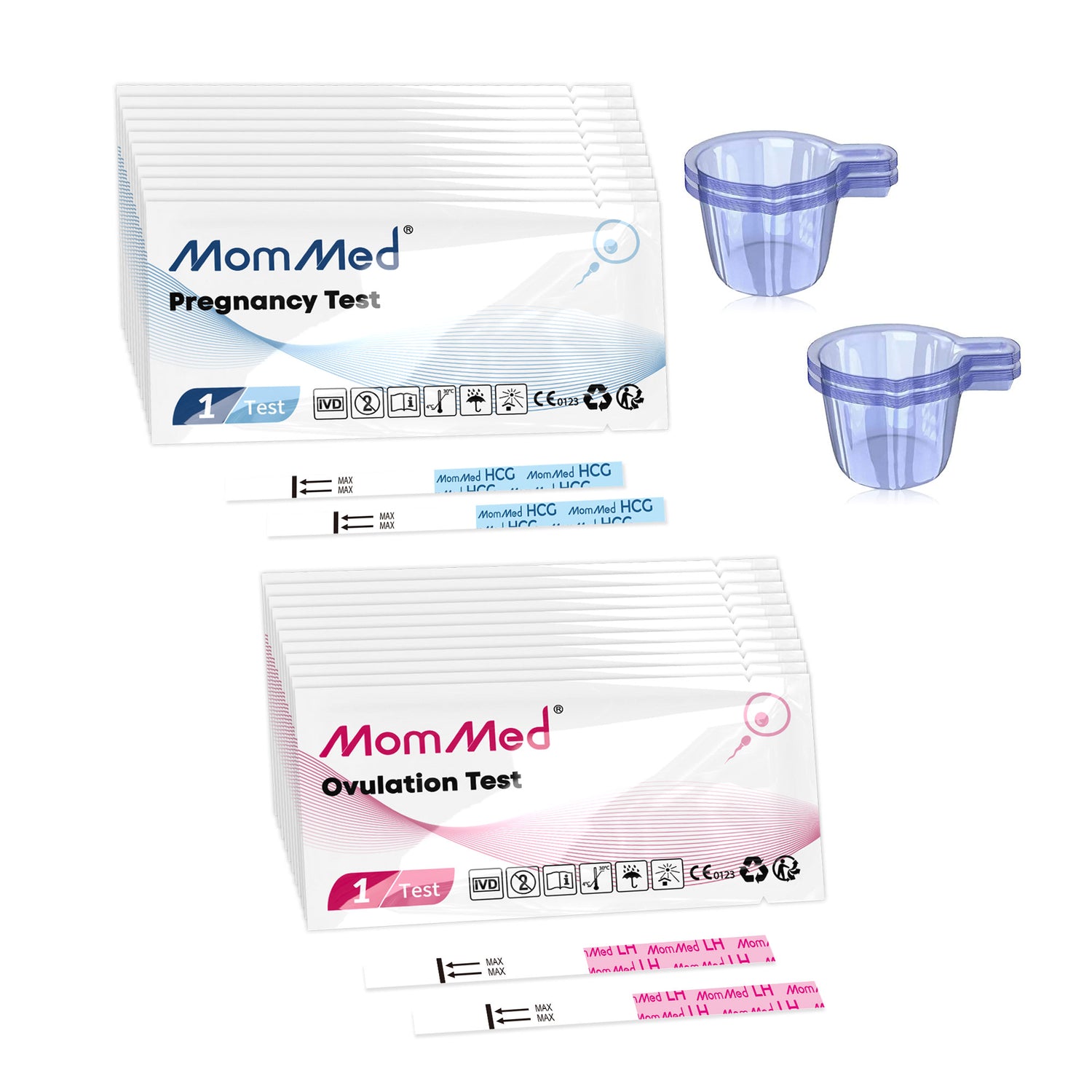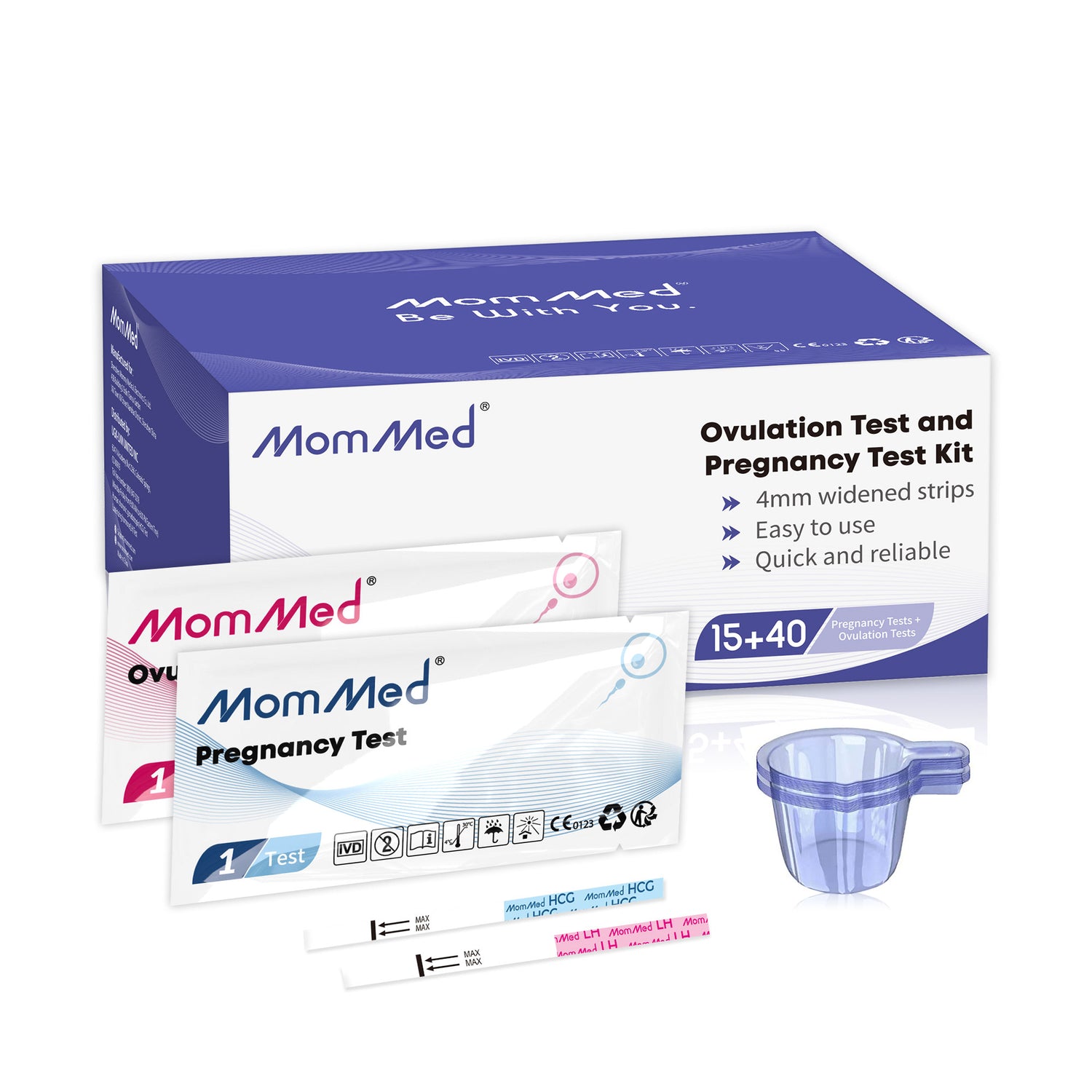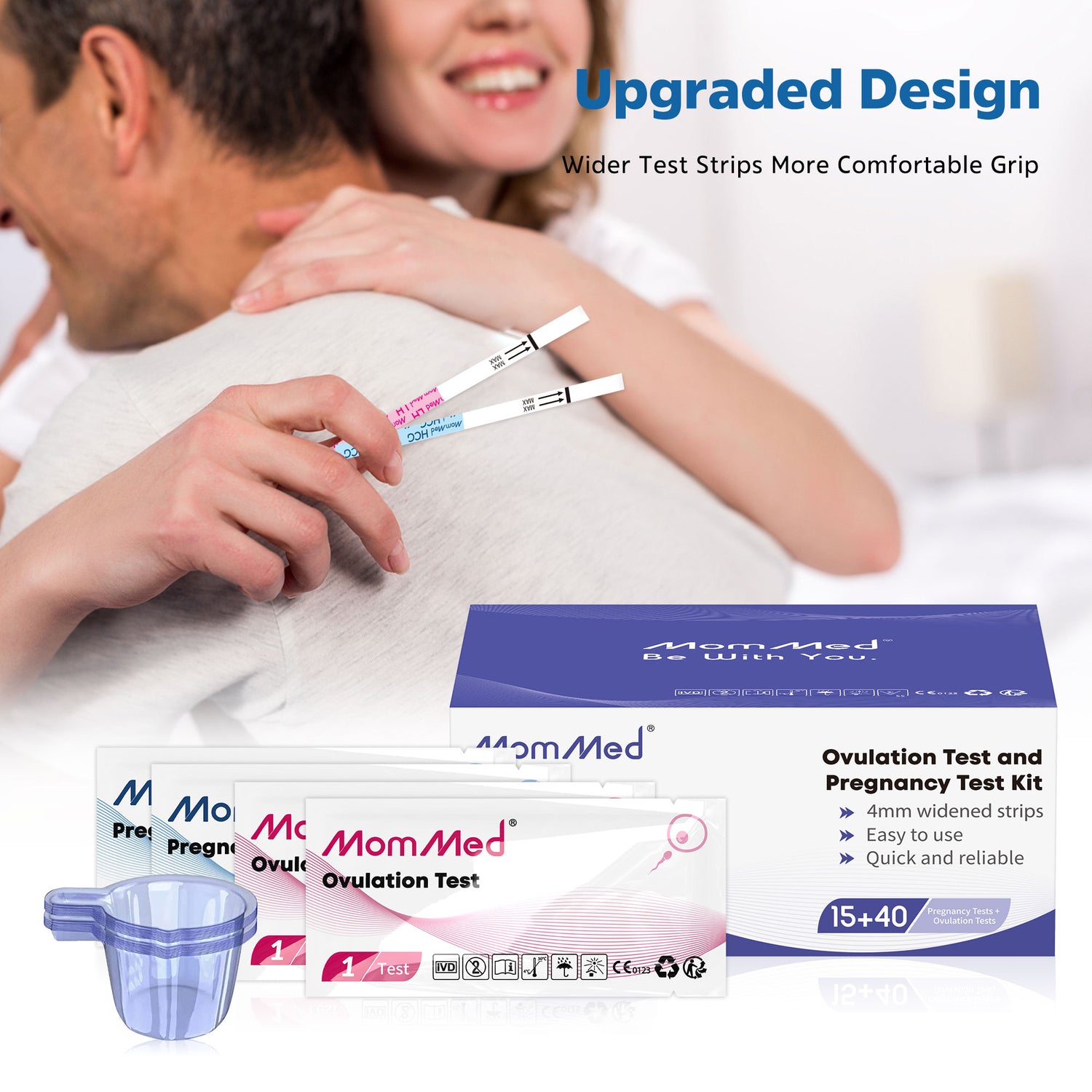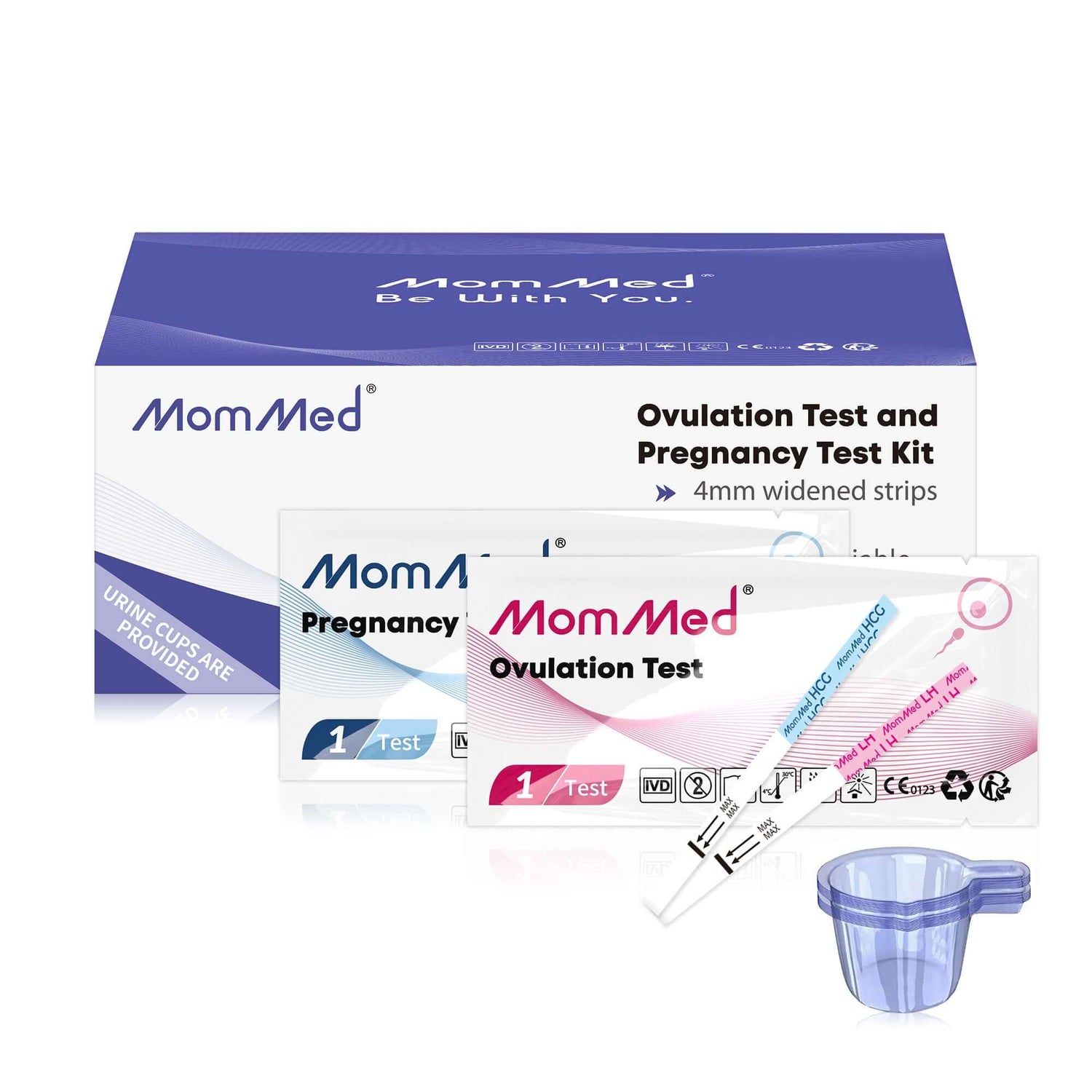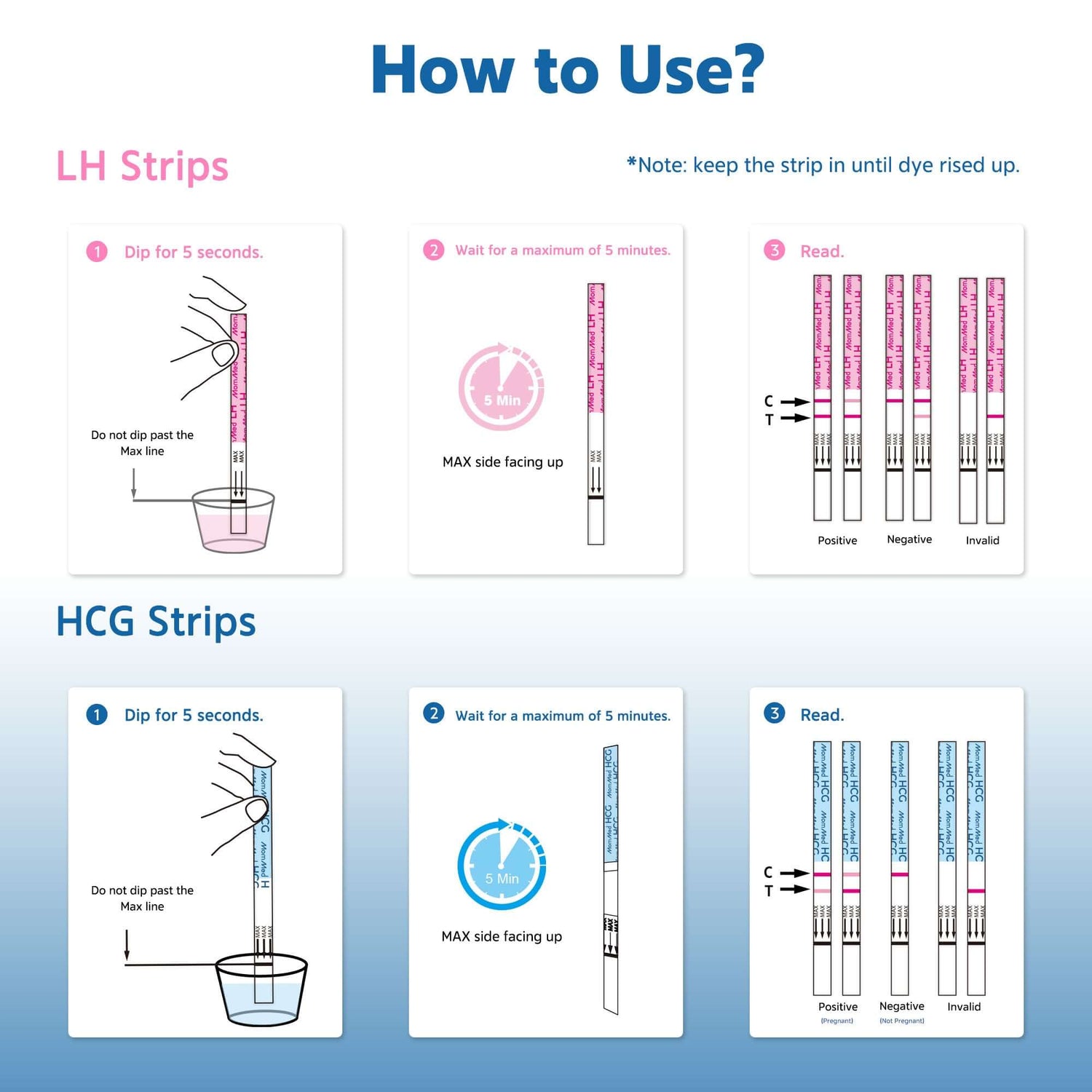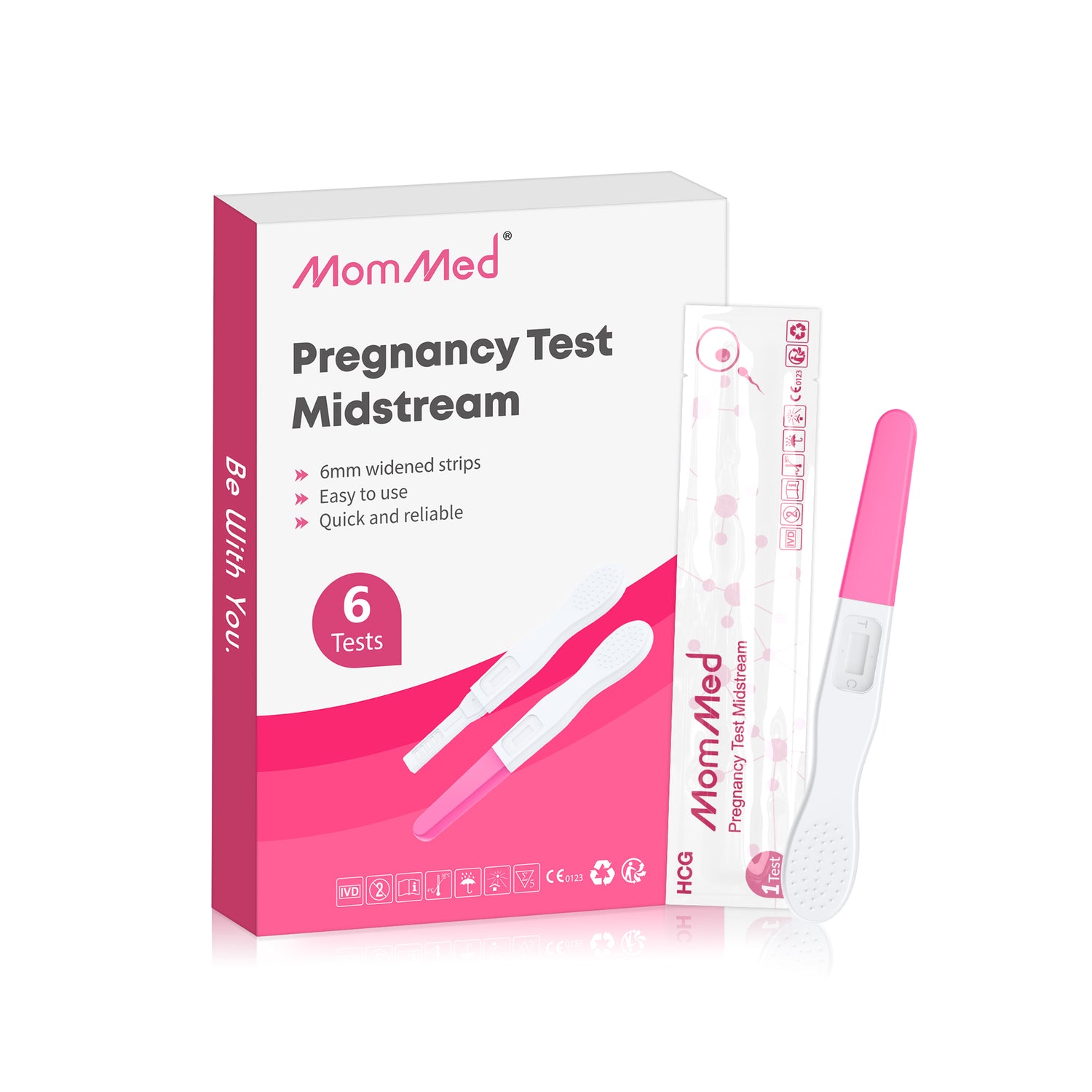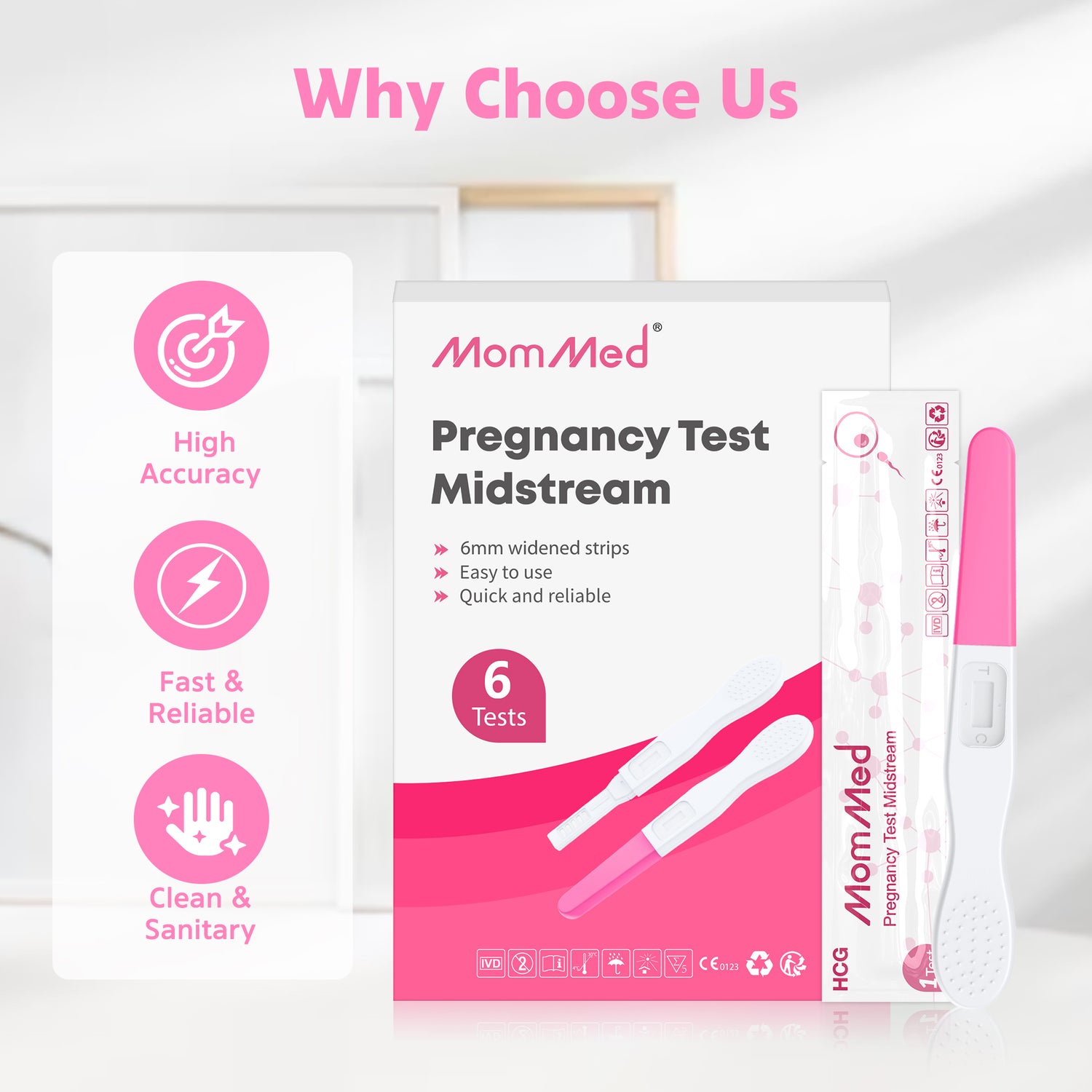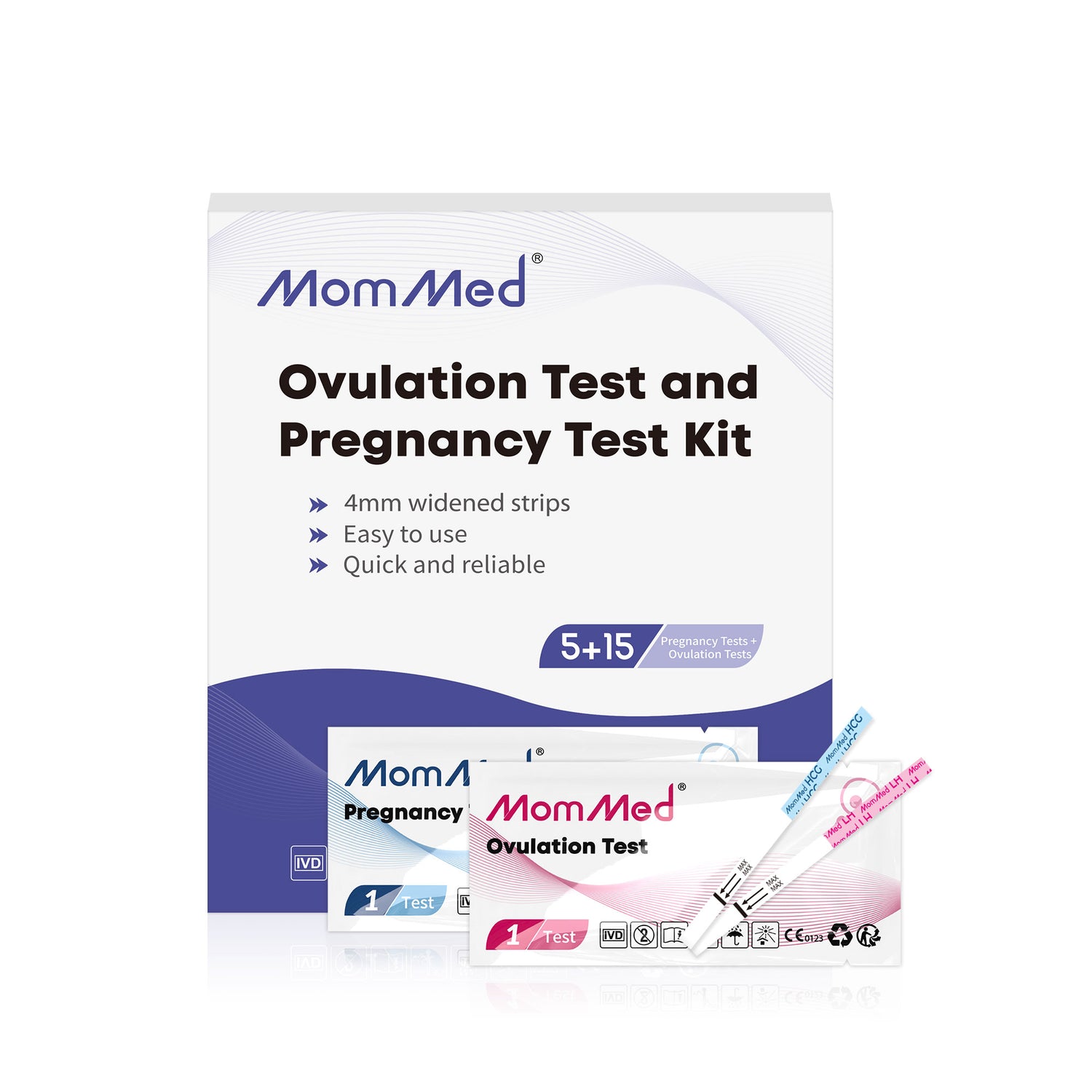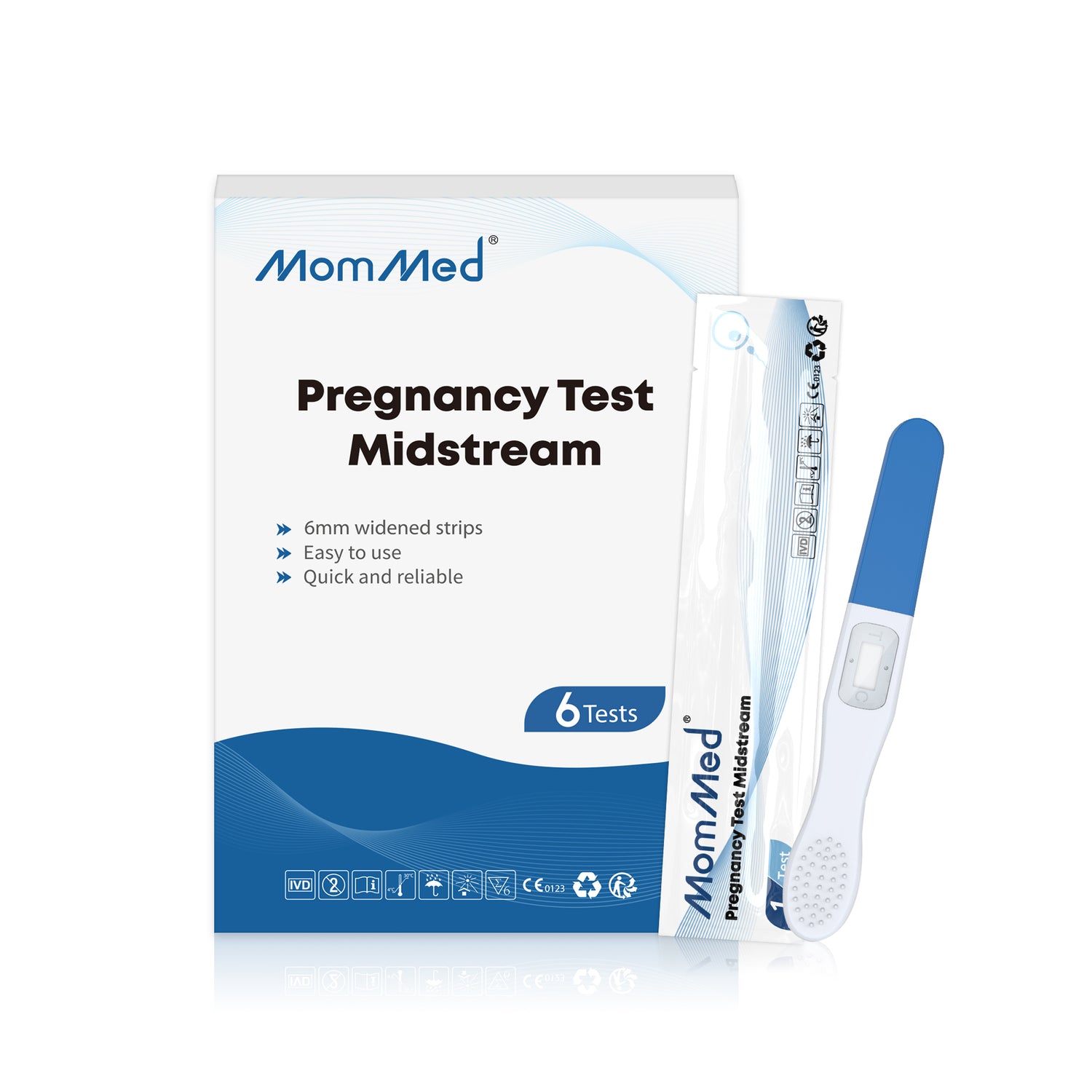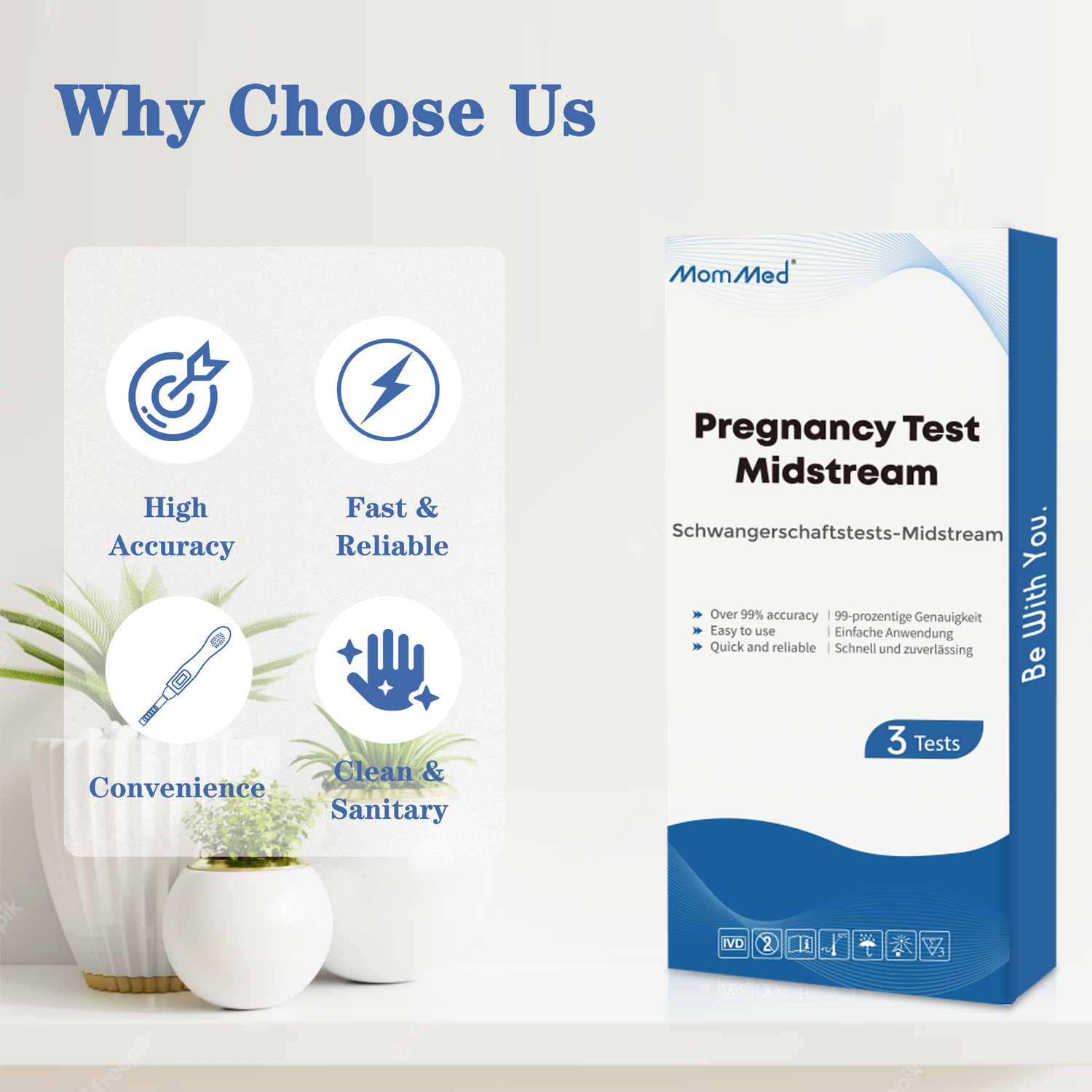Sort by:
Track your most fertile days with confidence with MomMed Ovulation Test Strips.
These HCG 20/25/30/55 strips offer reliable results, accurate tracking, and the highest sensitivity to help you predict the best time to conceive, with the number of urine cup.
Plus, the fast and easy to use design makes testing at home safe and convenient. Discover your most fertile days with MomMed!
MomMed Ovulation and Pregnancy Test Strips Combo Kit 20+60 provides a comprehensive suite of tests to help you effortlessly monitor and track your reproductive health.
With 20 Ovulation Test Strips and 60 Pregnancy strips, this easy-to-use and reliable kit will give you quick and accurate results in the comfort and privacy of your home.
Plus, the 80 Urine Cups and convenient, hygienic design ensure an impeccable experience that is sure to reward you with satisfaction.
MomMed's Ovulation and Pregnancy Test Strips Combo Kit is an easy and reliable way to track your progress.
It includes 25 ovulation test strips, 100 pregnancy test strips, and 125 urine cups, providing an accurate and hygienic solution for customers. Test with confidence and track your progress with convenience.
Maximize your chances of conception with MomMed's Ovulation and Pregnancy Test Strips Combo Kit.
This easy-to-use kit comes with 15 Pregnancy test strips, 40 Ovulation test strips, 55 urine cups, and is quick and reliable.
Track your progress in a hygienic and convenient way for maximum customer satisfaction. Get your Combo Kit today and make your dream of a family come true!
This MomMed Test Strips Combo Kit offers an elegant and hygienic solution to tracking your fertility and pregnancy.
With 80 ovulation and 25 pregnancy test strips, 55 urine cups, and easy-to-read results, you can track your progress with confidence and reliability. Enjoy the convenience of this comprehensive and customer-satisfaction-driven package.
The MomMed Pregnancy Test Midstream is a reliable, accurate, and hygienic way to test for pregnancy.
Each pack of 6 tests offers an over 99% accuracy rate, with quick and clear results. They are easy to use and come at an affordable price, giving peace of mind and helping to plan for pregnancy and beyond.
Easy-to-use design offers a wide 6mm strip for easy sampling, along with an anti-skid handle for improved accuracy.
Get started as early as 5 days before the missed period and reach out to our customer support with any questions or concerns.
The MomMed Ovulation and Pregnancy Test Strips Combo Kit has everything you need to take charge of your fertility journey! This kit includes 5 ovulation strips and 15 pregnancy tests, plus 20 urine cups for convenient and hygienic testing.
Easy to use and fast to read, this combo kit helps you keep track of your progress with quick and reliable results. Get peace of mind and customer satisfaction guaranteed!





